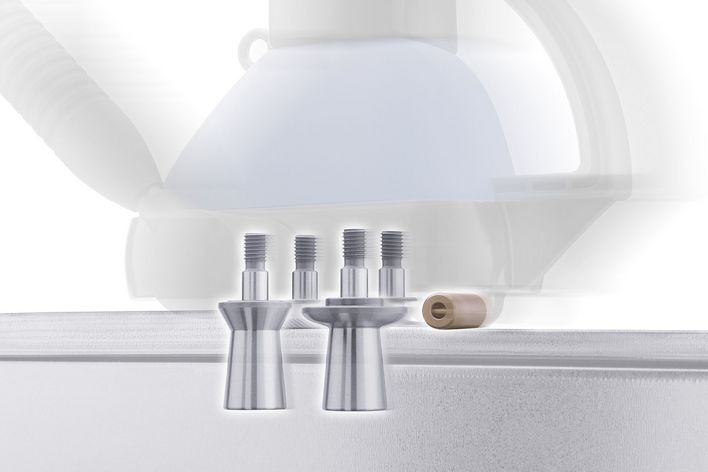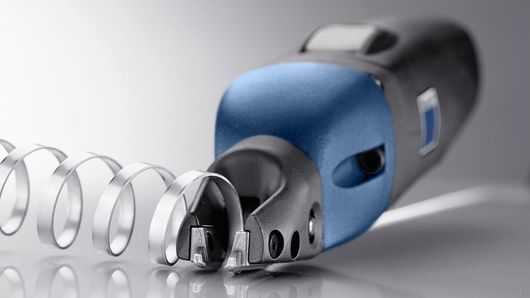The seam joint has a slight initial tension and is almost completely air and liquid-tight. Bending is done at three bending angles: 30°, 75° and 90°. The surface structure is not damaged and the machine automatically adapts to different sheet thicknesses.
Joining with seam lockers and power fasteners
When you join two workpieces, you often use mechanical joining processes. Our seam lockers and power fasteners are fundamentally different.
Seam locker process

TRUMPF seam lockers close Pittsburgh lock seams automatically and almost noiselessly in a roll/glide process. The folds are prepared on a stationary machine. It forms the edges of the sheet metal part. A standing seam plate is then placed on the Pittsburgh lock seam. You can use joining processes to connect two or more workpieces with each other.
With the TruTool F 125 seam locker, the prepared angle and standing seams are hammered shut and sealed tight. The free-standing tool closes pre-bent folds even in corners and angles. A spring-loaded hammer ensures consistent quality, even with variations in sheet thickness.
Advantages
- Consistent seam quality on straight and curved sheets
- Fast production of seam joints with high load capacity
Power fastener process

For the so-called displacement joining, the sheets are first placed on top of each other. Then the tool cuts a flange in both parts in a combined punching and forming operation. A form-locking connection joins the upper sheet to the lower sheet and the sheets are interlocked. This results in an inseparable joint produced without filler material or heat. For the joining process, you do not have to pre or post-process the material. Costs for connecting elements such as screws and rivets are eliminated. The emission-free process is cost-effective and produces tight, durable joints with an attractive appearance. Joining provides a competitive alternative to spot welding, riveting and hydraulic processes.
Advantages
- No pre or post-processing
- For form-locking, corrosion-resistant connections
- Replaces connecting elements such as rivets and screws
- No heat generation or flying sparks
- No toxic gases or vapours



